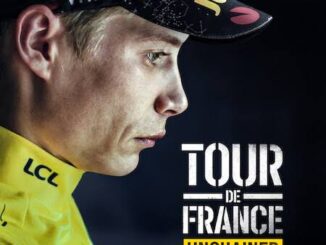
Van der Poel se queda como un ‘esqueleto’ y se mete tiradas de 9 horas con desniveles brutales para tener “una mínima posibilidad de ganar un Mundial hecho para escaladores”
Van der Poel is left looking like a ‘skeleton’ and puts in 9-hour rides with brutal elevation gain just to have “a minimal chance of winning a World Championship designed for climbers”…
Mathieu van der Poel is no stranger to pushing the limits of what’s possible on a bike, but even by his own standards, his preparation for the World Championship designed for climbers was nothing short of extraordinary. Known more for his explosive power on flatter terrain and punchy classics, Van der Poel took on an almost ascetic lifestyle and training regimen to give himself even the slightest chance of competing in a race that didn’t play to his natural strengths.
Images and reports emerged of Van der Poel looking gaunt, almost skeletal, a stark contrast to his usual robust, muscular frame. The transformation was the result of a rigorous training and diet plan designed to shed every possible gram of weight. For a rider whose power-to-weight ratio was already impressive, this change was a calculated risk—a delicate balancing act between becoming light enough to survive in the mountains while retaining the explosive strength that defines his riding style.
But it wasn’t just about weight. Van der Poel was logging some of the most demanding training sessions of his career, regularly spending nine hours in the saddle and climbing thousands of meters in elevation. These weren’t just long rides; they were designed to replicate the conditions of the World Championship course—relentless climbing, thin air, and very little room for recovery. The idea was to not only build endurance but also to condition his body and mind to endure the suffering that comes with such terrain.
His commitment to this goal is a testament to his professionalism and competitive spirit. Many riders might write off a course so obviously skewed toward pure climbers, but Van der Poel took it as a personal challenge. He knew the odds were stacked against him, that even his best performance might not be enough, yet he still went all-in. His own words put it best: he made these sacrifices for “a minimal chance” at victory. That phrase speaks volumes about both the improbability of the task and the mindset required to take it on.
In the world of professional cycling, where marginal gains and detailed planning often determine success, Van der Poel’s approach was both daring and inspiring. It showed a willingness to adapt, to evolve, and to suffer in pursuit of excellence—even when the path ahead seemed misaligned with his natural gifts.
While the result on race day might not have matched the effort he invested, his preparation alone earned the respect of fans and fellow riders alike. It was a reminder that greatness in sport is not just about winning, but about how far one is willing to go for a chance to compete at the highest level. For Van der Poel, turning himself into a climber—even temporarily—was a remarkable display of willpower, resilience, and love for the sport.



Be the first to comment